Day II: The High Place & Wadi Farasa
There is no solid evidence of human sacrifice being performed up on the High Place, but animal sacrifice is likely. Very little remains of the site, and much imagination is required to visualize the burnt offerings, moonlight glinting on ceremonial daggers and rivers of blood.
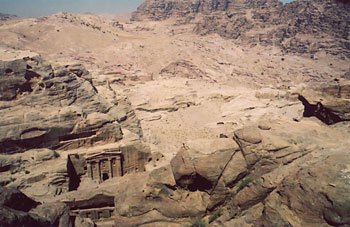 |
| Looking down from Wadi Farasa |
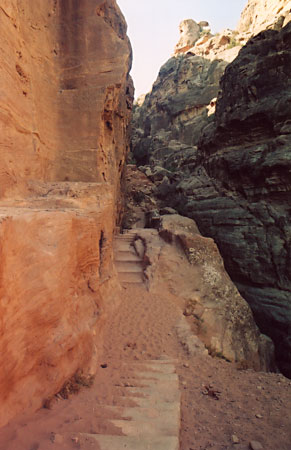 |
| Another 800 steps? |
Oh, but it felt like it. Other travelers told me the High Place was a shorter climb than the monastery, but fortunately, painfully steeper. Locals are seemingly unaffected by the topography of Petra, however. An old man leading his donkey practically skipped past while I gasped for air, and invited me to drink shai at his friend's shop.
The "shop" was a blanket spread on a semi-smooth rock, scattered with trinkets. Of course it was. Continuing my bafflement about the wandering shopkeepers in Petra, this man was not even set up on the travelers' path, forcing any interested parties to detour and scramble up the rock, which could only hold three to four people at a time just to sift through his refrigerator magnets and rock figurines. Although I suppose anyone who did this would be captive audience... interesting strategy.
After catching my breath over tea, I set off again, with the withered old man racing ahead. He told me that he made this hike every day to get to HIS shop. I could only imagine. He looked back at me many times, concerned about my apparently plodding progress. At the mountaintop he met me again and invited me to drink more shai after viewing the top of the altar.
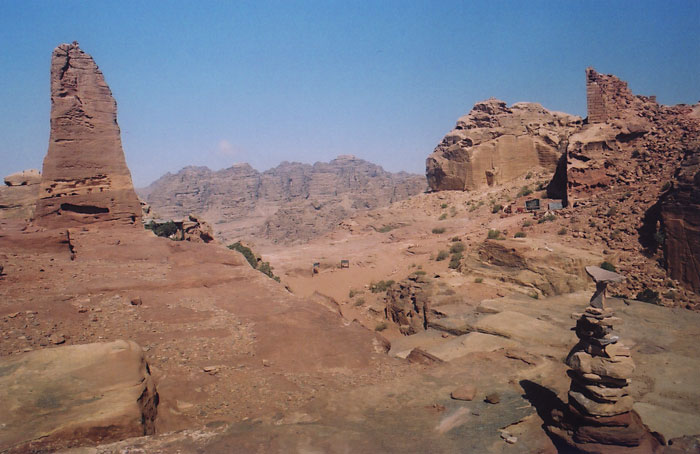
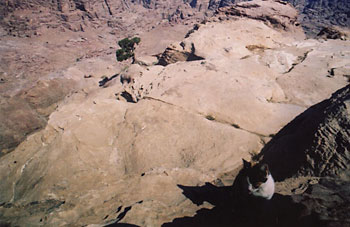
|
As I admired the rugged mountain landscape set against Day 17 of beautiful blue sky (nary a cloud in the Middle East), I spied a cat mewling its way toward me from another rock perch. I coaxed it over, thinking, "Hey, a new buddy." I wondered what a cat was doing all the way up here, how it climbed up, and what it ate... and because it was a cat, how on earth it entertained itself without humans to torture? Questions faded away when I saw the oozing spot where its left eye had been. I stopped beckoning... I didn't need to see that up close. Time for shai.
The owner of the shop plied me with sugary tea and several Petra rocks, the chunks of striped sandstone that children sell in the town center for 1JD each. Then he asked me if I were married. I gazed steadily at his wrinkled face and internally asked, "Why would you need to know?" and outwardly said, "Of course."
The shopkeeper's English consisted of about 50 more words than my store of Arabic, which meant there was a great deal of silence. Mainly I observed how interesting it is that the single girl (claiming to be married or not) wandering in the Middle East is given freebies everywhere she goes. In this instance, I noticed him selling tea to other tourists while sharing it with me for free. Also, the continuing gifts of rocks.

|
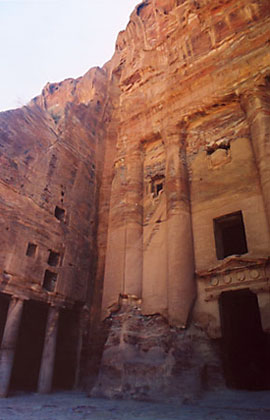
|
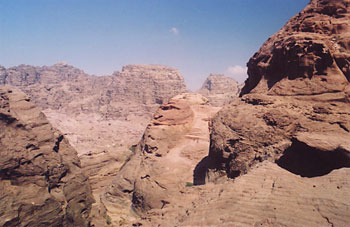
|
| Wadi Farasa trail |
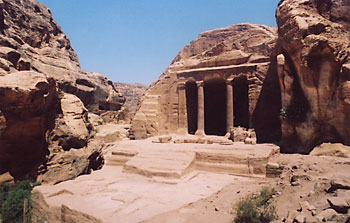
|
| Garden Tomb |
Wadi Farasa was like Grand Canyon Deluxe, wending my way down the beautiful valley, admiring the rich hues of the rock and excellent views, and occasionally stumbling upon antiquated tombs. This part of Petra had a more natural feel, less "living museum"-esque. Even better, I was completely alone for most of the hike.
I came across an ancient woman seated before the Lion Fountain (a lion carved into the rock face). She muttered "shai, shai" toothlessly and poured out a grimy glass. I had no choice but to sit and smile in silence, telling myself that there are no diseases in desert sand. An excruciating 10 minutes of staring later, I felt I could excuse myself. Soon after I passed the small, simple Garden Tomb.
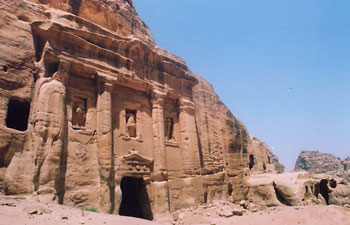 |
| Roman Soldier's Tomb |
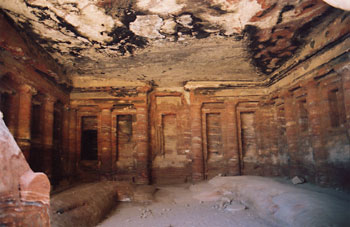 |
| Tricilinium |
I loved Wadi Farasa's gorgeous landscape dotted with minor, often unlabeled tombs. Walking here in relative solitude really lent the sense that there are many more monuments awaiting discovery. This hike provided unique views of Petra and pleasant encounters with local people—read Tea Party at Mohammed's for more details. Highly recommended.